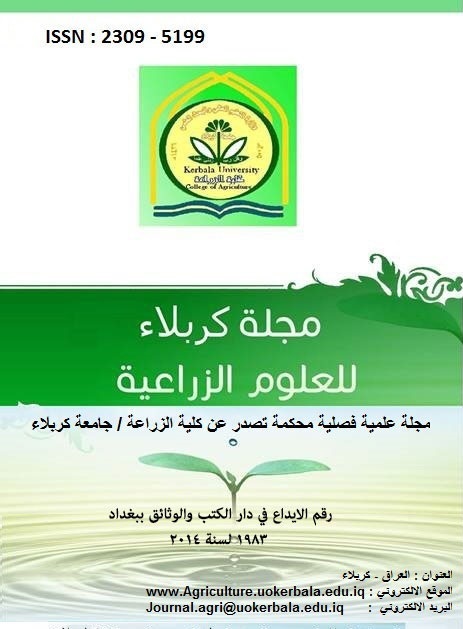Isolation and identification of the fungus Alternaria alternata from some wheat fields and the investigation of some of produced the toxins
DOI:
https://doi.org/10.59658/jkas.v4i4.9Abstract
This study was conducted for the purpose of isolating and Identifing the fungus Alternaria alternata isolation from some wheat fields and investigating some of the toxins produced by the fungus A. alternata . The results of some field survey of Najaf province revealed that the incidence of black point disease on the wheat caused by the fungus A. alternata ranged between 13 - 70% .The study showed identification of a new isolate of the fungus A.alternata that has been registered in the National Center for Biotechnology Information (NCBI), under the name: Najaf and under the accession number KX350052.1. The results of the toxicity test using HPLC and GC-MAS showed that the Najaf isolate is able to produce three types of toxins:namely alteratoxin II (ATX II), alternariol (AOH) and alternariol mono methyl ether (AME).
Downloads
Published
How to Cite
Issue
Section
License
Copyright (c) 2017 Copyright (c) 2024 is the Author's article. Published by the Journal of Kerbala for Agricultural Sciences under a CC BY 4.0 license

This work is licensed under a Creative Commons Attribution 4.0 International License.
Licensing Terms
All articles are published under a Creative Commons License and will be directed to the Creative Commons Attribution 4.0 International License (CC BY 4.0) That permits use, distribution, and reproduction in any medium, provided the original work is properly cited. This license also allows the work to be used for commercial purposes.
Use by both non-commercial and commercial users
This content is licensed under a Creative Commons Attribution 4.0 International (CC BY 4.0) license, permitting use by both non-commercial and commercial users. Individual users may access, download, copy, display, and redistribute the articles to colleagues, as well as adapt, translate, and text- and data-mine the content, subject to the following conditions:
- The author's moral rights, including the right of attribution and the right to protect their work from derogatory treatment, are respected.
- Where content in the article is identified as belonging to a third party, users must ensure that any reuse complies with the copyright policies of the owner of that content.
- If the article content is reused for research or educational purposes, users should maintain a link to the appropriate bibliographic citation, including the DOI and a link to the published version on the journal's website.

